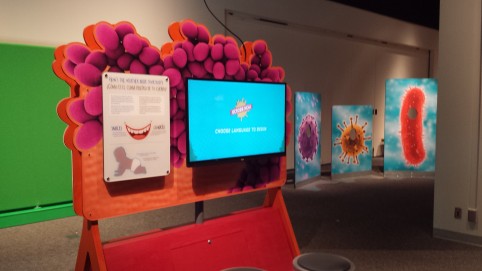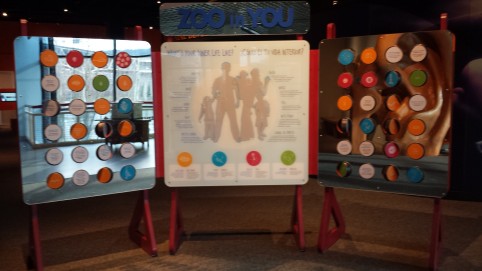The characterization of the dental plaque microbiome, using traditional 16S rDNA profiling strategies, illustrates both the strengths and the limitations of this method. The central limitation of the 16S rDNA methodology is the inability to decipher strain-level variation within a microbiome. Why is this important? It is becoming a common theme in microbiome research that microbiomes associated with the human host are distinct from those that inhabit the environment. The species present in distinct human microbiomes represent only a small number of taxa. Within these taxa are relatively few genera that have massive representation of member species. This structure has been referred to as the deep fan structure. When comparing microbiomes representing healthy and diseased subjects, it may be commonplace that important strain-level variations exist, that are in many instances potentially causally related to the health of the human host. The dental plaque microbiome illustrates this point strongly. Oral microbiologists have isolated strains from species including: S. mitis, S. sanguinis, S. mutans, S. gordonii and others that differ dramatically in their acid production and acid tolerance characteristics. The genes encoding these activities are not part of the core genome, but reflect functions encoded in the strain-variable portion of the genome (~10-30% of the genomes coding capacity). Important aspects of human disease etiology may be missed if we fail to address this possibility.
Summary of Progress: Dental plaque samples from human subjects with and without dental caries were used to isolate S. mutans and S. sobrinus colonies using enrichment culturing procedures. Most colonies were subjected to 2-3 rounds of replating to obtain pure colonies. The individual clones were then grown in liquid media to isolate genomic DNAs to carry out fingerprinting of strains based on RFLP analysis. This allowed us to collapse positive strains that appeared identical or highly similar into a set of strains that appeared to be of maximal diversity, encoding the largest number of unique gene sequences. We further characterized the individual strains using primer pairs that are specific for either S. mutans or S. sobrinus. Several of the isolates were negative by PCR and these corresponded to isolates with unusual RFLP patterns and so were excluded from further analysis. Some isolates tested positive for one of the two primer pairs used for screening and were marked as such but retained for further analysis using genome sequencing. The isolates obtained were multiplexed into two lanes of the Solexa GSA IIx at a theoretical depth of coverage of 50X. Previous evidence based on comparative analyses indicates that strain-specific regions of the S. mutans genome are not randomly distributed but rather are present at discrete locations. The breadth of these regions is not fully characterized but will be greatly enhanced by our analyses. To date no reference genome sequence is available for S. sobrinus, a potentially important contributor to dental caries.
Each genome to be sequenced was uniquely barcoded using the EpiBio Nextera DNA sample prep kit, and sequencing was performed using an Illumina Genome Analyzer IIx. The sequenced reads were then used to search against the Genbank non-redundant nucleotide database for quality assessment and to determine the top hit of each genome. As shown in Table 1, 76 isolates generated best hits to S. mutans and 47 to S. sobrinus genomes. Among the 17 isolates that do not appear to be either S. mutans or S. sobrinus it is somewhat puzzling how they were cultivated on the medias used. We believe these colonies were impure and predominantly that of the genome sequenced.
| Top Blast Hits Genomes |
# of isolates |
| S. sobrinus |
47 |
| S. parasanguinis |
1 |
| E. faecalis |
1 |
| Lactobacillus spp. |
1 |
| S. mutans |
76 |
| Chryseobacterium gleum |
1 |
| S. aureus |
8 |
| S. epidermidis |
1 |
| S. caprae |
4 |
Table 1. Summary of the tops hits of the reads from each isolate sequenced.
We used Newbler to assemble each of the genomic sequence reads. For S. mutans we used mapping assembly against the S. mutans UA159 sequence and we performed de novo assembly for S. sobrinus sequence reads due to the lack of available reference genome sequence. Overall the sequencing of isolates was successful with one exception. The remaining 75 isolates assembled with an average coverage of 91% with respect to the reference genome. Given what is known about strain-specific gene content in S. mutans one expects 90% coverage to be equivalent to complete coverage since ~10% of UA159’s genome sequence is not likely to be shared with these isolates. The average number of contigs/isolate is 215 with average length of 10,842 bp. Based on this outcome it is highly likely that we will identify sequence reads from essentially all strain-specific genes for each isolate, the extent that full-length gene sequence has been generated and further to what extent those sequences display genomic context are a part of our current efforts.
Ongoing Efforts. We are currently identifying strain-specific sequences from each isolate to determine the extent that these sequences might be shared among newly characterized isolates and their association with either caries-free or caries-active subjects. We will also identify the set of core gene sequences that appear to be present in all S. mutans and S. sobrinus genomes respectively. Ultimately we have demonstrated the use of high throughput sequencing technology as a means for characterizing oral pathogens of interest. Suggested applications for this type of research effort include the generation of strain-specific oligonucleotides to be added to existing DNA microarray content to enhance analysis using standard CGH methods. Another powerful use of this data can be obtained via the application of a variety of selection schemes that reveal the fitness of individual strains among the groups sequenced. The identification of strain-specific sequence signatures allows us to design primer pairs that can be used to measure the abundance and growth characteristics of that strain by qPCR. Potentially more interesting is the measurement of strains’ growth characteristics in competition with other sequenced strains. We have created mixtures of all of the sequenced S. mutans and S. sobrinus strains as independent pools and also generated a super pool including all sequenced strains. We have subjected these pools to a number of selective growth conditions including oxidative stress, low pH and growth on a variety of sugar substrates. In each case we envision that the generation of gene expression data and/or qPCR data detailing the abundance of each strain before and after selection will reveal individual strains that display high and low resistance to low pH, oxidative stress etc. This experimental procedure is analogous to phenotypic screens involving pools of single gene KO strains that have been uniquely barcoded to allow highly parallel analysis using DNA microarrays as popularized by the S. cerevisiae community. The variation performed here is to make use of the strain-specific gene sequences as a surrogate for the molecular barcode. Each strain will have at least one and probably hundreds of unique sequence identifiers that may be exploited for this purpose.
It is our hope that this demonstration will provide the dental research community a blueprint for how genome sequence data can be exploited and become more than a simple GenBank record for reference purposes. The experimental process described above provides a novel way to relate genotypic and phenotypic information on collections of strains derived from healthy and diseased human subjects. The sequence data for all assemblies has been placed in the public domain and we are currently awaiting accession number assignments. If you have some ideas for negative selection, let me know, I am happy to share the strains/pools and funding permitting, primer pair aliquots targeting specific strains in the pools.
The projects described above were supported by NIAID via a contract to JCVI under the Pathogen Functional genomics Resource Center (N01-AI15447) and funds from NIDCR to PFGRC in an attempt to enable the HMP research community to exploit genomic and metagenomic methods. The work pertaining to the oral cavity was done in collaboration with Dr. Walter Bretz at NYU and the efforts pertaining to the gut microbiome were done in collaboration with Dr. Cynthia Sears at JHU.



